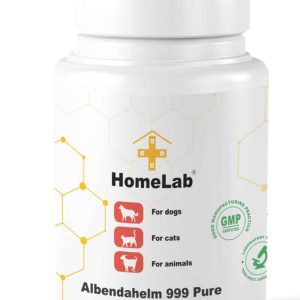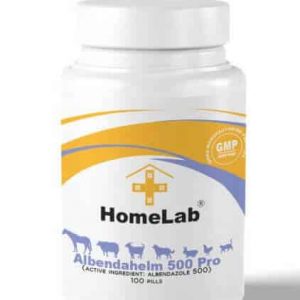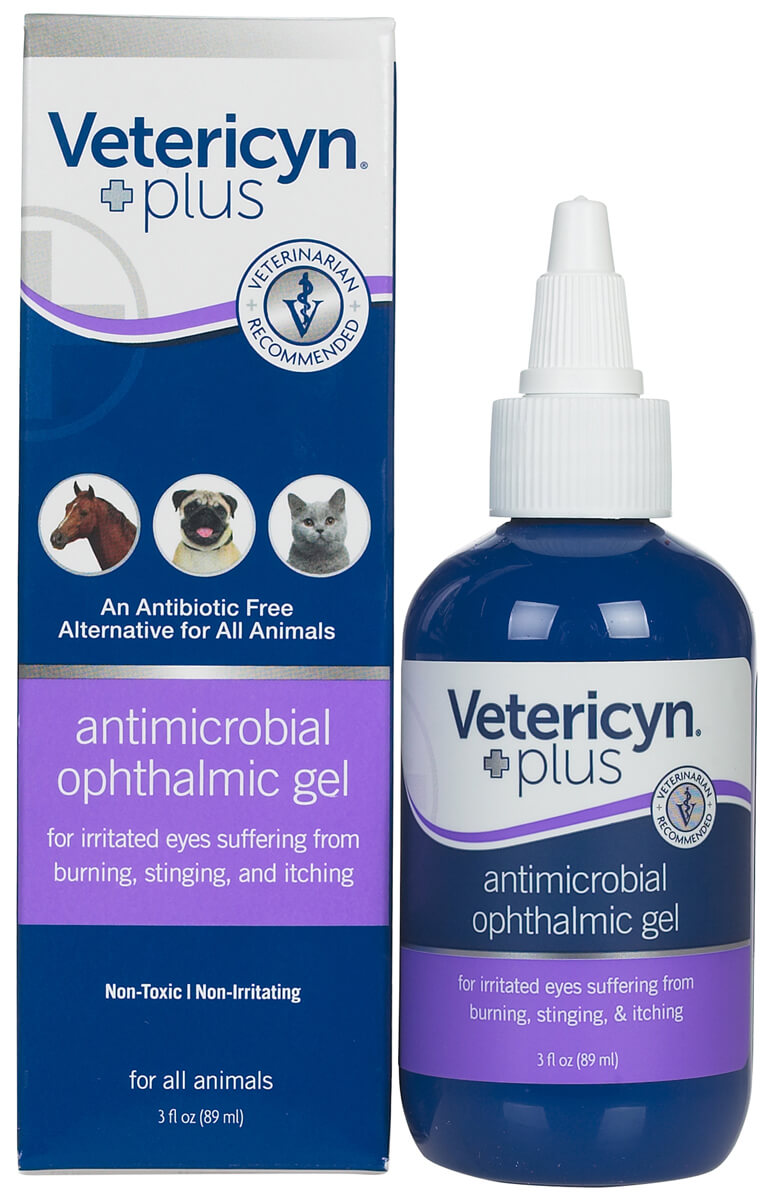It doesn’t matter if you have the most hygienic dog in the world. It doesn’t matter if you pamper your favorite pup all day and watch everything that goes into its mouth. Chances are, at some point in your dog’s life, it’s going to get some sort of parasitic infection. Now, there are all kinds of infections but regardless of the type, they all have one thing in common: they’re annoying. Buy Albendazole tablets here.
-
Product on sale
 Pure Albendazole Powder 100gOriginal price was: $105.00.$97.00Current price is: $97.00.
Pure Albendazole Powder 100gOriginal price was: $105.00.$97.00Current price is: $97.00. -
Product on sale
 Albendazole Tablets Dewormer for Dogs 100 count (Albendahelm 500 Pro)Original price was: $65.00.$55.00Current price is: $55.00.
Albendazole Tablets Dewormer for Dogs 100 count (Albendahelm 500 Pro)Original price was: $65.00.$55.00Current price is: $55.00.
What is a Parasite?
Before we get into the details, let’s take a look at what parasites actually are. You’ll be surprised to know that these tiny, troublesome, microscopic organisms are actually quite simple.
A parasite is basically any organism that lives in or on a host, feeding off the host or living at its expense. Yes, imagine a tiny, invisible organism living inside your dog’s body rent-free and causing it all kinds of discomfort. That’s a parasitic infection.
Types of Parasitic Infections

First off, you should know that not all parasites are created equally. There are generally two kinds of infections: internal and external. Let’s take a look at a few common examples.
Internal
- Heartworm
Intestinal
Most intestinal parasitic infections are caused by worms but that doesn’t mean that all intestinal parasites are worms. Here a few good examples:
- Hookworms
- Ringworms
- Roundworms
- Tapeworms
- Whipworms
There are also a few non-worm parasites that can cause serious infections such as:
- Coccidia, Giardia, and Spirochetes (non-worm parasites)
External
- Fleas
- Ticks
- Lice
- Mites
Internal Dog Parasites
Heartworms
Let’s start with the first kind of infection that can affect our furry little friends. Heartworm parasites are transferred to dogs through mosquitoes. The mosquito bite helps get the parasite into the dog’s bloodstream. Can you guess where it goes from there? I’ll give you a hint, the name gives it away.
Yes, the parasite is carried by the blood all the way to the heart where it settles down and begins to mature. Heartworms can actually grow to incredible lengths, sometimes reaching 12 inches long! This, of course, causes the heart valves to get clogged. In turn, inflammation starts to develop and it becomes harder and harder for the heart valves to handle the blood flowing through.
How do you know if your dog has Heartworms?

As you can tell, heartworms are a bit of a big deal. That’s why you should learn to identify the signs and symptoms related to heartworms and keep them in mind. At first, dogs might develop a mild, persistent cough. Then the fatigue kicks in. Even the mildest of exercise can leave your pup out of breath. It might also lose its appetite. On top of all that, a heartworm parasitic infection can eventually lead to heart failure.
You should also know that some dogs can be asymptomatic. That means it could have an infection and yet, you’d never know without the right screening test. Therefore, as a responsible dog owner, you should get your little friend screened regularly for parasites. Typically, you’ll find that most vets already carry out these routine tests during check-ups.
These tests are actually quite sensitive, with the ability to detect a count as low as 1 worm. There is a catch, however, it can only detect adult heartworms, so timing is important.
Treatment of heartworms can vary between tablets, chewable tablets, topical creams, and even surgery.
Intestinal Dog Parasites
Intestinal dog parasites are among the most common types and they can be easily treated with several medications such as Fenbendazole and Albendazole. Let’s take a look at a few examples.
Hookworms

One of the most common intestinal parasitic infections when it comes to dogs is hookworms. As you’ve probably guessed since they’re “intestinal” parasites, hookworms are commonly transmitted via the gastrointestinal tract. That means your dog can ingest the parasite while cleaning itself, through food, and even through a mother’s milk.
Hookworms can also borrow in through the skin which is troublesome because hookworm larvae are commonly found in soil.
Once hookworms are inside, they attach themselves to the inner lining of the intestinal wall, feeding on blood. This, of course, can result in significant blood loss which can affect your pup’s health.
How to look for signs of Hookworms
Hookworms are usually detected in stool samples, under the microscope. Of course, being an “intestinal” parasitic infection, you can expect hookworms to have some gastrointestinal effects. Look for diarrhea and weight loss, which are common manifestations of most intestinal infections.
Ringworms

Contrary to what one might think, “ringworms” aren’t really worms. They’re fungi. I know, right? It got me the first time, too. Well, here’s the deal with ringworms. They love dogs with weak immunity. For example, pups that are less than one year old are highly susceptible to ringworms. The same goes for those that are malnourished, stressed, or immuno-compromised.
When to Suspect Ringworms

A parasitic ringworm infection usually affects certain areas like the head, ears, paws, and forelimbs. These areas usually develop lesions that look like bald, circular spots with red centers. In some cases, dogs might develop some mild hair loss. More severe cases can lead to widespread, fully-body infections.
The treatment of ringworms is actually quite simple. All it takes is some medicated shampoo or ointment and, in some cases, oral tablets.
Roundworms
Much like ringworms, this pesky type of parasitic infection tends to affect immuno-compromised dogs. They can cause coughing, diarrhea, vomiting, and malnourishment. These parasites can usually be detected in stool samples.
Tapeworms
Tapeworms are another type of parasitic infection that is typically transferred through ingestion. Most tapeworm eggs are usually carried by adult fleas and can cause your pup some weight loss, GI discomfort, and diarrhea.
The best way to protect your dog from tapeworms is to keep it safe from fleas. These pesky fleas not only annoy your pup into scratching all day, but they also carry tons of other diseases that can be devastating.
How to know if your Dog has Tapeworms

As frustrating as tapeworms are, there is one good thing about them. They’re easy to spot. If you’re wondering whether or not your dog has a tapeworm infection, all you got to do is literally look for them.
Tapeworms usually appear as tiny little grains of rice around your dog’s anus or in its stool. These tiny grains are either the tapeworms themselves or small segments of them. Either way, if you see anything that looks like rice, there’s a chance your pup might have a parasitic infection.
Not to worry, tapeworms are easily treated by several oral and parenteral medications. But of course, it’s always a good idea to keep your pup safe and away from fleas, to begin with.
Whipworms
Whipworms are tiny little parasites that your dog might pick up through licking or even sniffing contaminated surfaces. Much like the other intestinal parasitic infections, this one causes some GI discomfort along with the usual weight loss.
The problem with whipworm infections is that they’re a bit difficult to spot in a stool sample. However, there is one thing you can look for. If you find that your pup’s stool is covered in mucus, especially near the tip, chances are you’ve got a whipworm infection on your hands. If so, a dewormer is definitely someone you should see.
Coccidia, Giardia, & Spirochetes
While these three parasites aren’t technically worms, they can cause quite a bit of trouble. You see, the problem with these parasitic infections is that they go to work before any symptoms even appear on your dog. That means your pup could be infected, but you wouldn’t know until stress or any kind of immunity-reducing factor appears. That’s when the more severe symptoms of these parasites appear.
For example, Spirochetes, which can live in both blood and the intestines, can cause a lot of diseases. We’re talking about Lyme disease, syphilis, and a whole bunch of bad news for your furry little friend.
Treatment of Intestinal Parasitic Infections
While each of these parasitic infections has a certain protocol for treatment, there are several effective medications commonly used for all of them.
For example, there’s Fenbendazole and Albendazole.
Fenbendazole
Several studies have shown that Fenbendazole is an excellent choice when it comes to parasites. It’s one of the best drugs on the market for dealing with pesky infections that affect your dog’s health. Before we get into the efficacy of using Fenbendazole for treating parasitic infections, let’s take a look at what it actually is.
What is Fenbendazole?
Fenbendazole is the name of an active ingredient used to eliminate several kinds of intestinal parasites that can affect your dog. Commercially, there are several brands of Fenbendazole such as Panacur and Safe-Guard.
Regardless of what brand you choose, Fenbendazole can come in many dosage forms. You can find it in the form of granules, suspensions (liquid), and even pastes. You just have to calculate the correct dosage based on your pup’s weight. After that, you can just mix it in with your pup’s food for easy administration.
How Safe is Fenbendazole?
Good question. Sure, parasitic infections are tough, but does that mean you should just use any kind of medication without checking its safety? Of course, not. One of the best things about Fenbendazole is its safety profile.
For starters, fenbendazole is uniquely safe due to the fact that it’s quite selective. What does that mean? Well, simply put, this drug selectively targets parasite cells and is attracted to them much more than your pup’s cells. The more targeted a drug is, the fewer side effects it causes.
Once administered, the drug begins working immediately and continues to work even after being metabolized. After 48 hours, the drug will have been completely excreted from your pup’s system. This is the reason why Fenbendazole is usually given several days in a row. It really depends on the type of parasitic infection, the severity, and your dog’s weight.
If you’re still not quite sold on Fenbendazole’s safety profile, you’ll be happy to know that it’s considered safe even for 2-week-old puppies.
Benefits of Fenbendazole in Treating Parasitic Infections
- Quite safe and doesn’t affect your dog’s tummy
- Its price is affordable compared to other kinds of medication
- Can be found at most pet stores and can be stored in the fridge for some time
- Works on several kinds of parasites
Albendazole
Albendazole is another common drug used in treating several types of parasitic infections, especially when it comes to Giardiasis. Much like Fenbendazole, Albendazole can be found in several dosage forms like oral suspensions, capsules, and even transdermal shots. That being said, there are several key differences that make Fenbendazole much more preferable to Albendazole.
For starters, Albendazole is excreted from your dog’s system very quickly, sometimes lasting less than 12 hours at a time. This means that you’ll need to administer quite a few doses for it to be effective. This, of course, means there’s always a risk of an overdose. This also means that your dog becomes more liable to side effects. It’s no wonder Fenbendazole is often preferred, thanks to its decent safety profile.
Possible Side Effects of Albendazole
Now that we know that Albendazole has a few possible side effects, let’s take a look at what they are. The most important side effect of all is bone marrow suppression. That’s just a fancy way of saying the drug prevents your dog’s body from making red and white blood cells. So? Well, red blood cells are important because they’re basically what makes up most of the blood. As for white blood cells, they’re the core of your dog’s immune system.
That being said, there is one piece of good news. Once you stop administering Albendazole, your dog’s bone marrow begins to recover and regenerate on its own. That means that its side effects are reversible and aren’t that big of a deal once treatment is over.
Main Parasites Albendazole Works Against
While Albendazole is considered to have a broad spectrum, there are some parasites that are more vulnerable to this drug. Here are a few examples:
- Paragonimus kellicotti (a parasite that can cause cysts in the lung)
- Bladder worms
- Capillaria plica
- Filaroides
- Giardia
Who isn’t allowed to use Albendazole?
Since Albendazole lowers your dog’s white blood cells, you could say it lowers its immunity, right? Well, then it goes without saying. Immuno-compromised pups should steer clear of Albendazole.
Now, side effects aside, there is one thing about Albendazole that could be a problem for liver-impaired dogs. It’s mainly metabolized in the liver making it bad for those with not-so-great liver functions.
To summarize all of this, sure, Albendazole is a highly effective drug, but you should definitely talk to your vet before using it. There are way too many health factors to consider and you should always get the advice of a professional.
How to Prevent Parasitic Infections

Now that we know the kinds of parasitic infections that could affect our furry friends and how to treat them, here’s a question: how do you avoid them in the first place? Easy.
1- Medication: Yes, just like there are medications for the treatment of parasitic infections, there are several preventive medications. Ask your vet about the best option for your pup.
2 – Monitoring: One of the most important things to do is to always monitor your dog. Look for signs of an infection or changes in their eating or bowel habits. If it begins losing weight or you notice something unusual, check with your vet right away. Annual screening tests are also a great idea.
3 – Hygiene: This one’s pretty obvious, but definitely worth mentioning. Try to always keep your pup’s environment clean. The bed, the food, the water, the coat, everything. You should keep your dog away from garbage, dead animals, and other possibly infected dogs or cats.
Parasitic Infections in Dogs: FAQ
Can Dog Parasites be Transmitted to Humans?
While these parasites mainly cause problems for our furry little friends, they can affect our health, as well. We should always be careful, especially when it comes to children. For example, a child playing in a sandbox might be subject to dog feces containing the parasites. Fleas, ticks, lice, and mites are also easily transferred from dogs to humans. You should always take as many sanitary precautions as possible when dealing with a parasitic infection.
Conclusion
Parasitic infections are extremely frustrating and to make things even worse, almost every dog becomes infected at some point in its life. That’s why it’s important to always keep an eye out for signs of an infection. You should also take as many preventative measures as possible.
That being said, if your dog does get a parasitic infection, don’t worry. It’s not the end of the world. There are tons of effective medications like Fenbendazole and Albendazole that can eliminate the parasites quickly. Just make sure you talk to your vet and formulate the perfect plan to get rid of these pesky, unwanted guests!
 Total Pooch Dog Supplements, Tear Stain Removers, De-wormers, Tylosin for Dogs and other great products.
Total Pooch Dog Supplements, Tear Stain Removers, De-wormers, Tylosin for Dogs and other great products.






